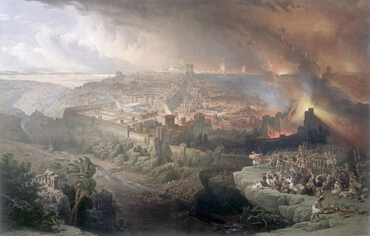The first altar mentioned in the Word was the one built by Noah after he came out of the ark, after being saved from the great flood. On that altar, he sacrificed clean animals to the Lord.
Mountains represent the Lord because of their height; we need to raise our thoughts above worldly things when "talking" with the Lord. An altar is a small artificial mountain. When it's used in worship, it can call to mind this raising of thought. The fire and smoke that rise from an altar are symbolically being sent to the Lord.
Most altars were made from unhewn stones. Stones represent truths. Unhewn stones - ones that have not been shaped by men - represent truths from the Word, truths that have not been adulterated.
The clean beasts to be sacrificed represent good things, charitable acts done because they are right. The clean birds represent thoughts about doctrine and actions, and about what is right. Presenting these things is an acknowledgment that we have them from the Lord, and a giving thanks to Him for them.
In the Israelitish Tabernacle, the altar of burnt offering represented the acknowledgment of good and the altar of incense that of truth. For this reason this larger altar, which was outside by the door, was made of brass which signifies natural good, while the altar of incense was made of gold, which signifies love to the Lord from whom comes truth.






